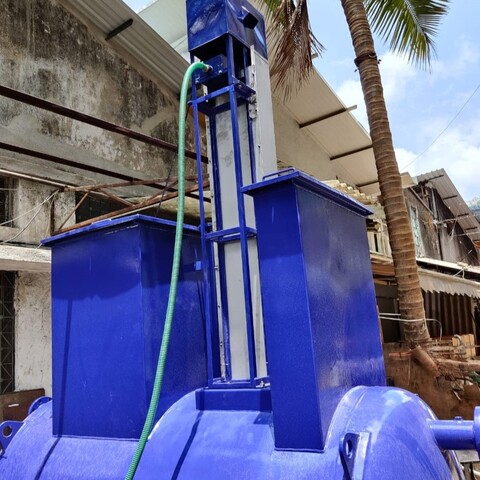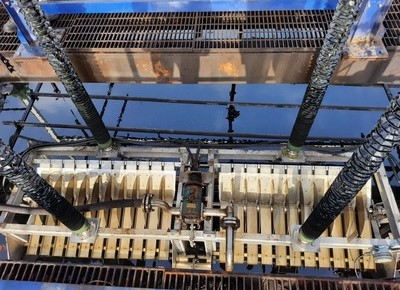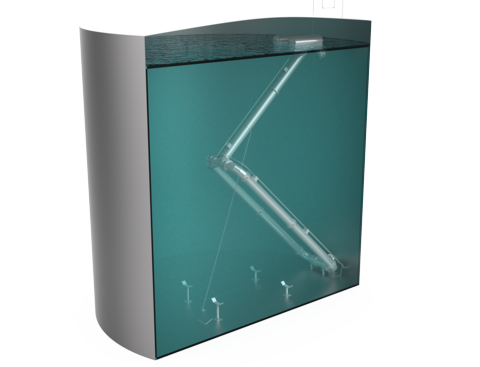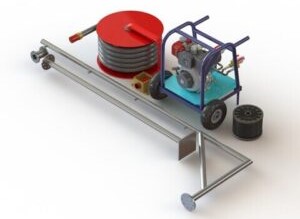Applications of CPI Oil Water Separator in Industries

Corrugated Plate Interceptor (CPI) is an oil water separator. It is used to separate free floating oil and suspended solids in wastewater treatment and certain industrial applications. CPI uses the principle of gravity and coalescing to separate oil from water.
How does CPI Oil Water Separator Work?
CPI oil water separator mainly consist of a pack of corrugated plates designed to create a large surface area for efficient oil, suspended solids and water separation. The corrugated plates have voids between them for the movement of wastewater/oily water.
The wastewater enters the tank containing corrugated plate interceptors. The corrugated plates in the tank are inclined upward or downward at 45 degrees to direct the flow of the water. The plate angle facilitates downward flow of the solids and upward flow of oils.
The suspended solids in wastewater settle on the upside of the inclined plates resulting in downward settling of solids due to gravity. Whereas, the droplets of free-floating oils coalesce to form large oil droplets and rise to the surface. Gravity aids solids to settle at the bottom of the tank and coalescing facilitates tiny oils to rise upwards. This combination efficiently separated oil, water and suspended solids.
The free-floating oils on the surface of the water is skimmed off and the sludge is removed from the bottom portion of the tank. To further enhance the efficiency of the CPI, a secondary coalescer is integrated for specific applications.
CPI Oil Water Separators for Industries
CPIs are widely used in wastewater treatment and industrial applications. Industrial applications that demand removal of suspended solids and waste oil commonly use CPI. In the oil and gas industry CPI oil water separator is used in primary treatment of produced water to separate solids, organics and water. It is also used in de-oiling the produced water.
They are used in automotive industry CPI oil water is used in automobile workshops to effectively separate oil, grease, and suspended solids from wastewater generated during the maintenance and repairs works. Similarly, in automobile paint shops wastewater is generated which contains chemicals, wasted paint and additives. A CPI with air flotation process aids the particles to attach to air bubbles and forcing them to rise to the surface, which are subsequently skimmed off.
The food processing industry generates wastewater containing large volumes of oils and fats. To reuse/recycle recovered oil, to prevent fouling of drainage systems and sewage system the industry widely uses CIP oil water separators.
Industrial processes targeting oil, grease and suspended solids separation mainly make use of CPI oil water separators. Industries such as mining, textile, dairy, pharma, power plants, airports, steel, chemicals and marine make used of corrugated plate interceptors. CPI oil water separators are also integrated in coolant recovery systems, oily water treatment, oil & grease removal and pre-treatment processes.
CPI Oil Water Separator Installation
CPI oil water separator has a small foot-print and is effective in separating oil, water and suspended solids. The design of a CPI oil water separator is based on certain parameters such as flow rate, water temperature, oil specific gravity, feed oil concentration, and discharge parameters.
The Installation Requirements of a CPI Oil Water Separator are:
- 1. The inlet pipe size should be in accordance to the expected flow rate to prevent turbulence and direct the wastewater evenly into the separator.
- 2. The outlet pipe size should handle the treated effluent flow and must be positioned to maintain the desired water level in the separator.
- 3. An appropriate plate angle and spacing should be determined based on the type of oil and solids concentration in the wastewater for optimal results.
- 4. CPI oil water separator should be installed above ground with adequate access for maintenance and inspection.
- 5. Sufficient space around the CPI oil water separator should be available for easy access to inspection ports, sludge removal points, and other components.
Frequently Asked Questions
Q.1 How does an oil water separator machine work?
A. An oil water separator machine works by using gravity and filtration techniques to separate oil and other hydrocarbons from water. The oil, being less dense, floats to the surface where it is collected, while the cleaned water is discharged.
Q.2 Why should industries invest in a TPI oil-water separator?
A. Industries should invest in a TPI oil-water separator because it efficiently removes oil and contaminants from wastewater, ensuring compliance with environmental regulations and improving overall water quality. This investment helps prevent costly fines and enhances operational sustainability.





